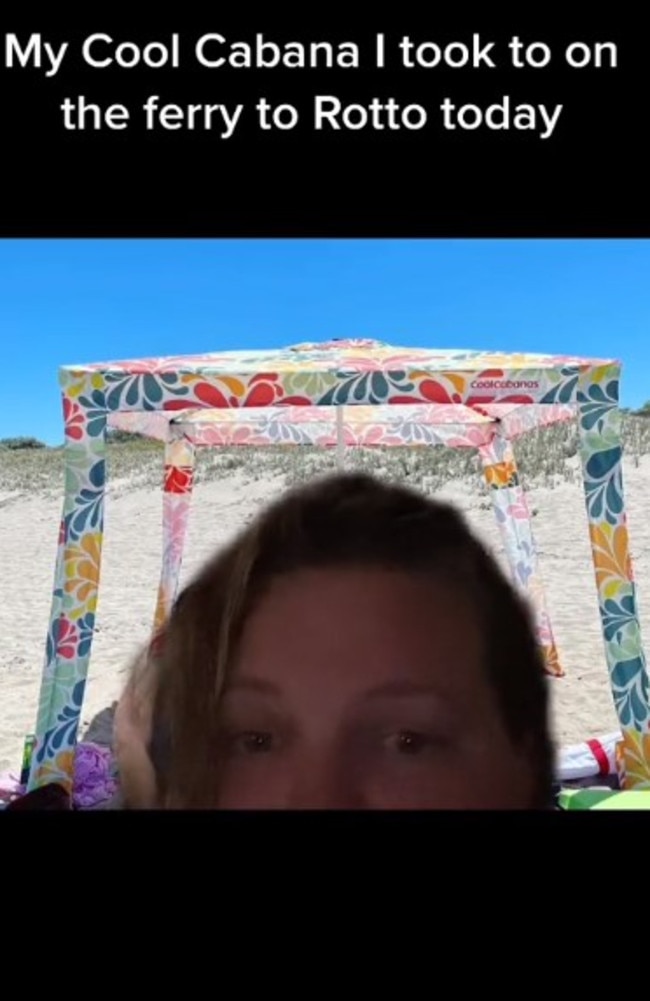Annoying ‘epidemic’ taking over our beaches, dividing Aussies
A handy beach item has grown in popularity recently - but as the controversial product takes over beaches, are they worth the money?
Australia is divided over pop-up sunshades being used at beaches, with critics bemoaning the ‘epidemic’ of cabanas ruining their ocean views - but fans praising them for keeping the family sun-safe.
One of the most popular brands is CoolCabana, which was created by Australian architect Mark Fraser after holidaying with his family in 2014.
The product hit the market just over a year later, retailing at $190, and have since become a common sight.
Brands such as Aldi Australia and Kmart have since followed suit, releasing versions for under $100.

One argument for the controversial item comes in the form of the sun protection a cabana can provide.
Anita Dessaix, Chair of Cancer Council’s Public Health Committee, said Australia has one of the highest skin cancer rates in the world with two in three Aussies diagnosed with skin cancer in their lifetime.
“More than one in four Australians said that sun protection isn’t a part of their daily routine in summer. Also, in Australia, one in eight adults and one in five teenagers are sunburnt on an average summer weekend,” Ms Dessaix told news.com.au.
“That’s why products like cabanas that are specially designed to protect individuals from the sun and have a high UPF rating are useful to create shade but should be used in combination with other sun protection measures.”
However, Ms Dessaix said cabanas shouldn’t be used to extend a person’s time in the sun.
“While not always possible, minimising exposure to UV radiation from the sun is the most effective strategy to prevent skin cancer,” she said.
“To seek shade, use trees, built shade structures, or bring your own gazebo or umbrella with a high UPF designed to offer sun protection. Shade reduces exposure to UV radiation, but it can still reach you via reflection – especially around water – so make sure you use shade in combination with other sun protection measures.”

The Cancer Council encourages Aussies to slip on slip on protective clothing; slop on a minimum of SPF30 (ideally SPF50) broad-spectrum, water-resistant sunscreen; slap on a broadbrimmed hat; seek shade and slide on sunglasses.
Hundreds of TikTok videos have popped up over the last year showing beaches covered in the devices, with many complaining about the room they take up.
One TikTok user, @nataekirsche, owns two of the cabanas and went so far as to label their use an “epidemic”.
Meanwhile another account, by the name of @thoughtsandtravel showed a video of Coogee Beach, in Sydney’s eastern suburbs, littered with cabanas.
Another video, this time captured in Noosa, showed similar scenes and stirred a strong but divided reaction.
Chrissy Jamo, who posted the video, said: “And I have no issues with people using these cabanas. I own one! If you like to be on a beach where you literally cannot see the ocean among the sea.”
“It’s sun safety! You want to actually enjoy the beach when your there. I love the look of them. It’s cool,” one social media user commented.
Another said: “As a Melanoma survivor I think this is great.”

“How does one find there cabana when they all look the same and there are so many,” another said.
One added: “I’m a life saver there and we had a missing kid gone for 2h because you can’t see a thing.”
Earlier, in 2023, influencer Liv Rah posted a video of a Gold Coast beach covered in the cabanas.
“CoolCabanas taking over the Gold Coast,” text over the clip said, referring to a popular brand of the beach cabanas.
Later in the clip, the poster complained they were taking up “prime real estate”.
It became such a problem for a popular beach in the US — South Carolina’s Myrtle Beach, which attracts 20 million visitors a year – the cabanas were banned all year round.
The ban has been in force since 2014 after a virtual wall was created impacting on public safety and the view, authorities said.
Councils in Sydney earlier this year said it was necessary to monitor the situation, even asking people to move on, but at the time said following in the US footsteps was extreme.






